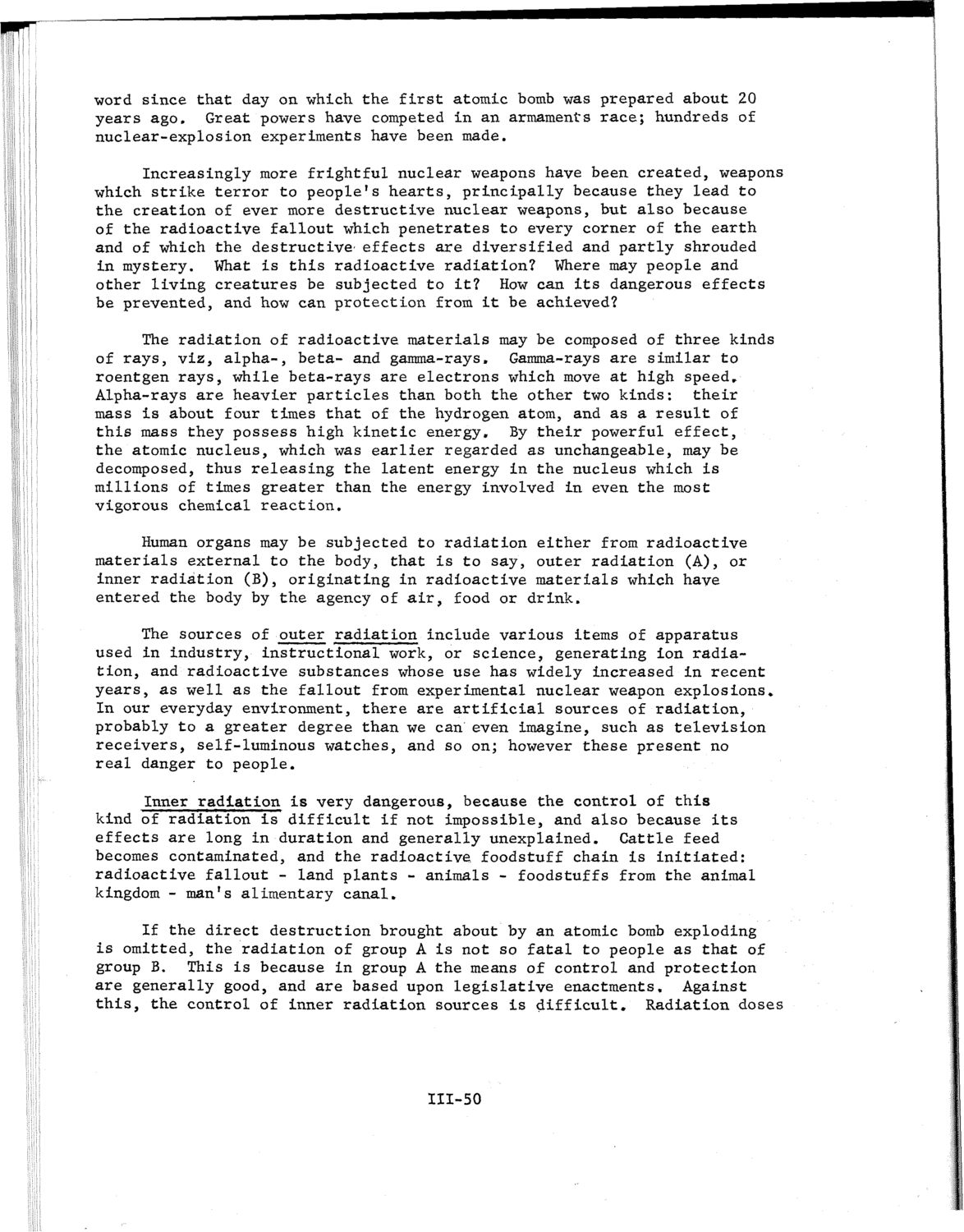| |
| |
Caption: SWE - Proceedings of the First International Conference of Women Engineers and Scientists
This is a reduced-resolution page image for fast online browsing.

EXTRACTED TEXT FROM PAGE:
word since that day on which the first atomic bomb was prepared about 20 years ago. Great powers have competed in an armaments race; hundreds of nuclear-explosion experiments have been made. Increasingly more frightful nuclear weapons have been created, weapons which strike terror to people's hearts, principally because they lead to the creation of ever more destructive nuclear weapons, but also because of the radioactive fallout which penetrates to every corner of the earth and of which the destructive' effects are diversified and partly shrouded in mystery. What is this radioactive radiation? Where may people and other living creatures be subjected to it? How can its dangerous effects be prevented, and how can protection from it be achieved? The radiation of radioactive materials may be composed of three kinds of rays, viz, alpha-, beta- and gamma-rays. Gamma-rays are similar to roentgen rays, while beta-rays are electrons which move at high speed. Alpha-rays are heavier particles than both the other two kinds: their mass is about four times that of the hydrogen atom, and as a result of this mass they possess high kinetic energy. By their powerful effect, the atomic nucleus, which was earlier regarded as unchangeable, may be decomposed, thus releasing the latent energy in the nucleus which is millions of times greater than the energy involved in even the most vigorous chemical reaction. Human organs may be subjected to radiation either from radioactive materials external to the body, that is to say, outer radiation (A), or inner radiation (B), originating in radioactive materials which have entered the body by the agency of air, food or drink. The sources of outer radiation include various items of apparatus used in industry, instructional work, or science, generating ion radiation, and radioactive substances whose use has widely increased in recent years, as well as the fallout from experimental nuclear weapon explosions. In our everyday environment, there are artificial sources of radiation, probably to a greater degree than we can even imagine, such as television receivers, self-luminous watches, and so on; however these present no real danger to people. Inner radiation is very dangerous, because the control of this kind of radiation is difficult if not impossible, and also because its effects are long in duration and generally unexplained. Cattle feed becomes contaminated, and the radioactive foodstuff chain is initiated: radioactive fallout - land plants - animals - foodstuffs from the animal kingdom - man's alimentary canal. If the direct destruction brought about by an atomic bomb exploding is omitted, the radiation of group A is not so fatal to people as that of group B. This is because in group A the means of control and protection are generally good, and are based upon legislative enactments. Against this, the control of inner radiation sources is difficult. Radiation doses 111-50
| |